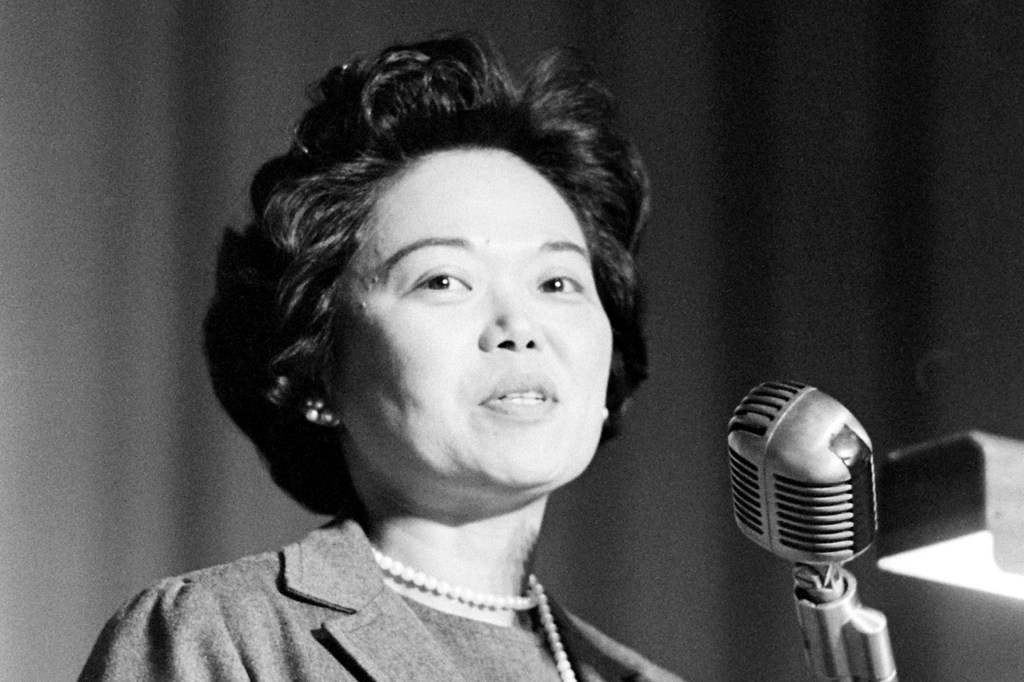Born on 6th December 1927 in Paia, Hawaii, Patsy
Matsu Takemoto was a third-generation Japanese American. Despite residing in a
predominantly working-class area, the Takemoto family was relatively middle-class,
which allowed Patsy to attend school, unlike many of her peers who relied on
working at sugar plantations. An incredibly intelligent young woman, Patsy was
elected as Junior class president while attending Maui High School and
eventually graduated as valedictorian in 1944. Growing up during the Second
World War, the Takemoto family faced discrimination, on one occasion, her
father Suematsu Takemoto was questioned by police regarding the Pearl Harbour
bombing. Fortunately, he was released, however many Japanese Americans were
detained and imprisoned in internment camps.
Her brilliance led her to graduate from the University of
Hawaii, majoring in chemistry and zoology in hopes of becoming a doctor. Before
attending the University of Hawaii, she attended the University of Nebraska
where she was ostracised due to the university’s segregation laws. Strongly
opposing the policy, Patsy joined other students and alumni to campaign against
it and the law changed at the institution within a year. Despite being a
varsity member of the school’s debate team and the president of the Pre-Med
Students Club, all her applications to study medicine were rejected because
of her gender. Instead, she was accepted to study Law at the University of
Chicago, being only one of two women in her class.
While studying in Chicago, she met John Mink whom she later
married. After graduating in 1951, the pair had their first child, Gwendolyn,
who later grew up to be an author and feminist activist. The unit moved to
Hawaii, where, although Patsy had passed her bar exam, she struggled to find
employment as her interracial marriage was frowned upon. In spite of this
discrimination, Patsy was not deterred and in 1954, she founded the Oahu Young
Democrats practice. Patsy Takemoto was the first Japanese American woman to
practice law in Hawaii. In 1962, she won a seat in the Hawaii State Senate, and
after 2 years of fighting, she won her seat in the House of Representatives in
1964, making her the first Asian American congresswoman. Takemoto was a beacon
for women’s rights, most notably, she was able to pass the Women’s Educational
Equity Act in 1974, ensuring equality for girls in school.
Not only was she a pioneer for women’s rights, but she also
championed racial equality, environmental justice and was strongly opposed to
the US’ involvement in the Vietnam War. Her efforts resulted in the Oregon
Democratic Party inviting her to be the state’s presidential nominee, which
made her the first Asian American woman to run for president, alas, she
received only percent of the votes. Nevertheless, Patsy continued her political
career and served 6 terms in the House of Representatives.
In August of 2002, Patsy developed a complicated case of
pneumonia, which hospitalised her. Sadly, she passed away on the 28th of
September 2002. However, before she passed, she was still on the ballot for the
2002 election, and it was too late to remove her name. It was a landslide
victory. She had received the vast majority of votes, though, Rep. Ed Case took her
place as a congressman instead.
For decades, Patsy Takemoto was a voice for the voiceless, fighting
for the rights of women, immigrants, children, workers, and the environment. Her
intelligence and tenacity made her an incredible legal mind and activist.
“Patsy Mink.” National Women’s History Museum. 2019.
www.womenshistory.org/education-resources/biographies/patsy-mink.

Comments
Post a Comment